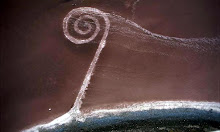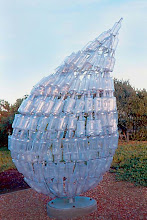One artist whose work is predominately mentioned in the "Materials" section of our book by Nick Kaye, is Dennis Oppenheim. Oppenheim first entered the performance art world because of his critical take on the "studio ideology of the gallery." Many artists and art critics of the time believed that a work of art should be able to stand on its own and " should be isolated from everything that would detract from its evaluation of itself." This assumption seriously diminishes the perceived value of site-specific art, considering that the basic theme of this type of work is that it cannot stand alone and is completely dependent on its surroundings. As is most obvious in his work, Oppenheim strongly counters this assumption, stating, "...activity on land is
charged, not passive like processed steel. Land holds traces of a dynamic past, which the artist may allow to enter his work if he so wishes." This backing of site-specific art aruges that when a work embodies its surroundings, it becomes more energetic than work that does not.
One of Oppenheim's most famous performance pieces was 1968's
One Hour Run, in which he created a six-mile, continuous path of snowmobile tracks in St. Francis, Maine. While this is an example of the ephemeral nature of site-specific art, it is also a perfect example of an artist completely embodying his site.
Oppenheim's
One Hour Run
For more information on Dennis Oppenheim, click
here.
References:
Site-Specific Art: Performance, Place and Documentation by Nick Kaye. Pages 151-152.











No comments:
Post a Comment